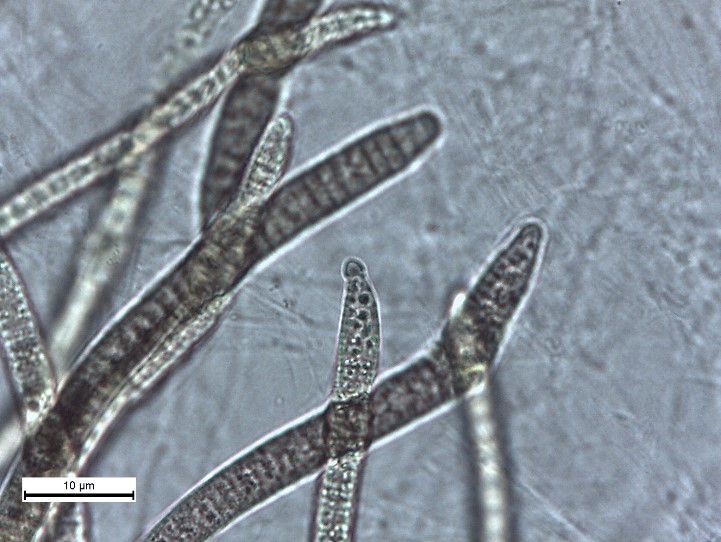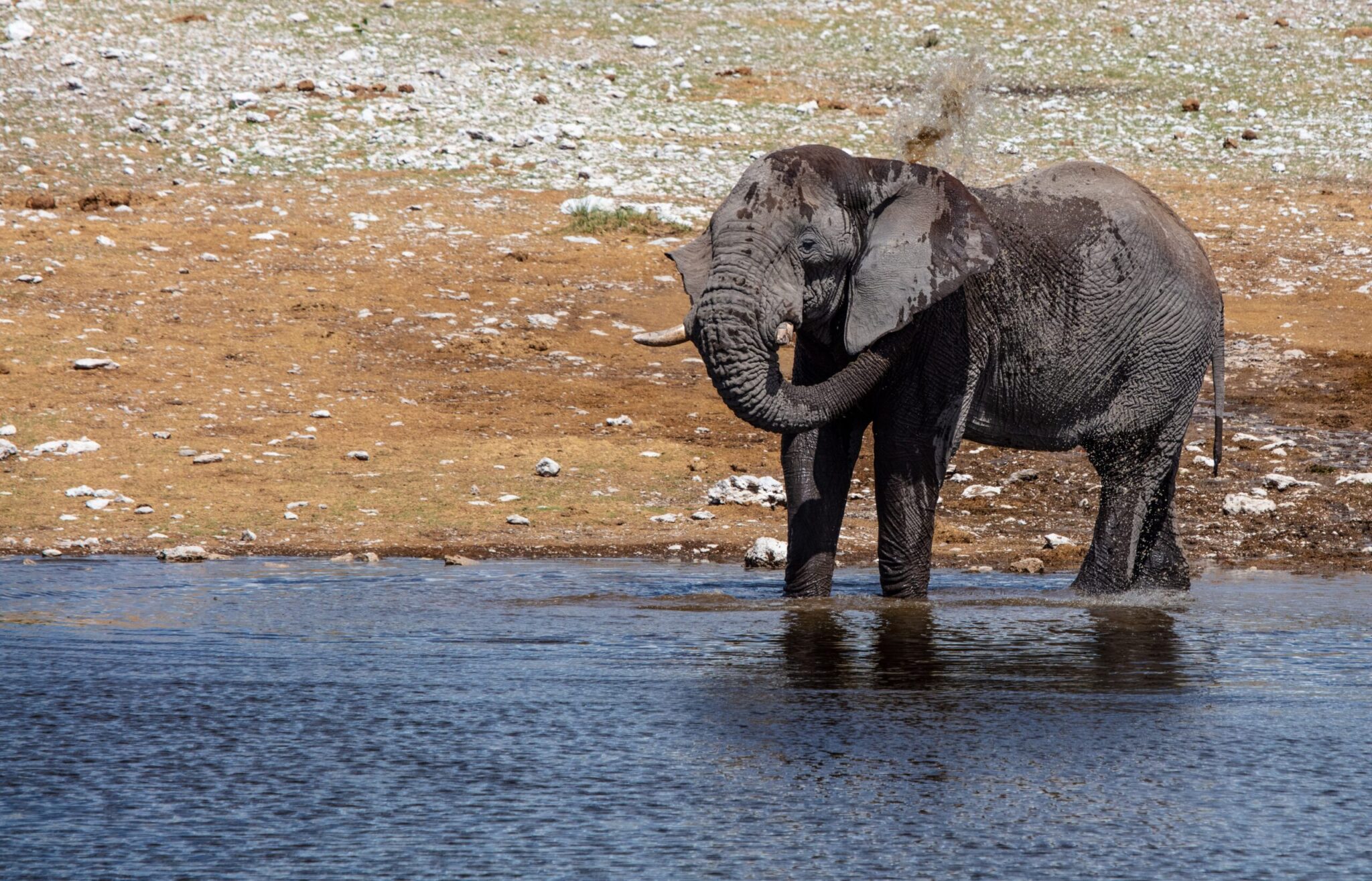Toxic Water (Due to Climate Change) killed the Botswana Elephants
Between May and June of this year, Botswana lost 330 of its elephants with no apparent reason. Originally, it was thought that due to lack of security around the elephant national parks that poachers that caused the mass death toll. However, in late June the deaths “stopped, coinciding with the drying of [water] pans”[1] and many of the dead elephants were found near watering holes.
After numerous in specialist laboratories in South Africa, Canada, Zimbabwe and the US the scientists found that they died from toxic, contaminated water. Scientists detected cyanobacterial neurotoxins to be the cause of deaths.
What do we know about Cyanobacteria and Algae Blooms?
Over the years, we here at the Water Institute have studied numerous Algae Blooms. They occur all over the world, even this time last year in Dublin around the Shelly Banks we experienced a foul smelling “red tide” which was due to an apparent overflow at the Ringsend Waste Water Treatment plant.
Cyanobacteria: general characteristics
Cyanobacteria are Gram-negative prokaryotic organisms and represent one of the most diverse and important groups of bacteria on Earth, with over 3000 species described (Nabout et al., 2013). We can highlight four main orders of cyanobacteria: Chroccocales, Nostocales, Oscillatoriales and Stigonematales, although the taxonomy of cyanobacteria is complex and continues to be reviewed today.
Cyanobacteria present great morphological diversity, and can appear as individual cells or grouped in mucilaginous colonies (order Chroococcales), filaments of up to several dozen cells (order Oscillatoriales) and even some species (orders Nostococcales and Stigonematales) have the capacity to carry out cell differentiation and generate cells specialised in fixing atmospheric nitrogen (heterocysts) or resistance cells (acinets), among other functions.
Cyanobacteria are considered the first organisms with the capacity to carry out oxygenic photosynthesis, which appeared approximately 3,500 m.y.a. (Schopf et al., 2007) and have considerably influenced the evolution of the original reducing atmosphere towards one of oxygenic characteristics. In addition to chlorophyll a, cyanobacteria have other types of accessory pigments with absorption in other wavelengths different from chlorophyll a, the phycobilliproteins (phycocyanins, phycoerythrins) which together with the chlorophylls provide the blue-green colour characteristic of this group and which caused them to be called blue-green algae for some time .
Cyanobacteria can be found in most terrestrial and aquatic ecosystems, from the deserts to the poles, including the oceans, fresh water, moist soil, temporarily wet rock in the desert, bare rock and soil, thermal waters and even in Antarctic rocks and ice. On the other hand, cyanobacteria play an important role in maintaining soil fertility because some of them are capable of fixing atmospheric nitrogen. However, they can sometimes cause problems in fresh water, which makes their study very important for the assessment of risks to the ecosystem and human health, and for the management of water uses (supply, recreational activities, and irrigation).
Formation of blooms
Cyanobacteria are capable of proliferating massively in aquatic ecosystems under optimal environmental conditions. These massive outcrops known as “blooms” can reach very high biomass concentrations (from 10 µg L-1 to several mg/L of chlorophyll a: and from 20,000 to more than 1 million cells per mL). They generate eutrophication problems (anoxia, loss of biodiversity) and are in most cases toxic (Codd et al., 2005).
The proliferation of these blooms, as well as their composition and magnitude, is highly affected by the proportion and chemical composition of the nutrients, among which we highlight mainly nitrates and phosphates. Blooms are produced in lenitic ecosystems (lakes and reservoirs) generally coinciding with periods of high temperatures, calm wind and stratification of the water column, especially between late spring and early autumn (May-October). Under these conditions, the cyanobacteria that form part of phytoplankton take advantage of some of their competitive advantages, such as: a) the development of gas vesicles (aerotopes) that allow them to move on the vertical axis in the water column; and b) their capacity to maintain a high photosynthetic rate even when light is dimmed by the high presence of biomass in the blooms.
Cyanotoxins
Cyanobacteria are characterised by an intense secondary metabolism or set of reactions not involved in the primary metabolism (photosynthesis, respiration). Among the most abundant secondary metabolites in cyanobacteria are cyanotoxins, bioactive compounds that have attracted great scientific interest due to their toxic nature for other organisms, especially vertebrates.
In spite of the high number of researches on cyanotoxins, at present their ecological and/or physiological role is not known with certainty, although several hypotheses have been proposed, defense against predators (zooplankton), signaling or “quorum sensing”; involvement in the intracellular metabolism of carbon-nitrogen or iron; or protection against osmotic stress.
Cyanotoxins have a very diverse chemical nature (alkaloids, oligopeptides, non-protein amino acids) and produce different effects on the health of animals and humans. They are usually classified, based on their effects on vertebrates, in hepatotoxins, neurotoxins, cytotoxins and dermatotoxins (Table 1).
Scientists warn that climate change may be making these incidents – known as toxic blooms – more likely, because they favour warm water. Our message from the Water Institute is clear – Water is not only going to become more and more scare but, the quality of the clean water we have is seriously being diminished by climate change in so many different ways impacting on this occasions on biodiversity and an endangered species.
By Ruth Clinton & Adrian Delgado

Images of cyanobacteria:





[1] https://www.bbc.com/news/world-africa-54234396
[2] https://www.irishtimes.com/news/environment/beach-near-dublin-s-wastewater-plant-blanketed-in-noxious-material-1.4006831
Nabout, Rocha J.J, Carneiro B.S., Sant´Anna C.F.M. L. (2013) How many species of cyanobacteria are there? Using a discovery curve to predict the species number. Biodiversity and Conservation 22: 2907-2918
Schopf, J.W., Walter, M.R. y Ruiji, C. (2007) Earliest evidence of life on earth. Precambrian Research 158 (3–4), 139-140
Codd, G.A., Morrison, L.F. y Metcalf, J.S. (2005) Cyanobacterial toxins: risk management for health protection. Toxicology and Applied Pharmacology 203 (3), 264-272
Cirés S., Quesada A (2011). Catálogo de cianobacterias planctónicas potencialmente tóxicas de las aguas continentalesespañolas. 85 pp. Ministerio de Medio Ambiente y Medio Rural y Marino, 2011. ISBN 8449110726

